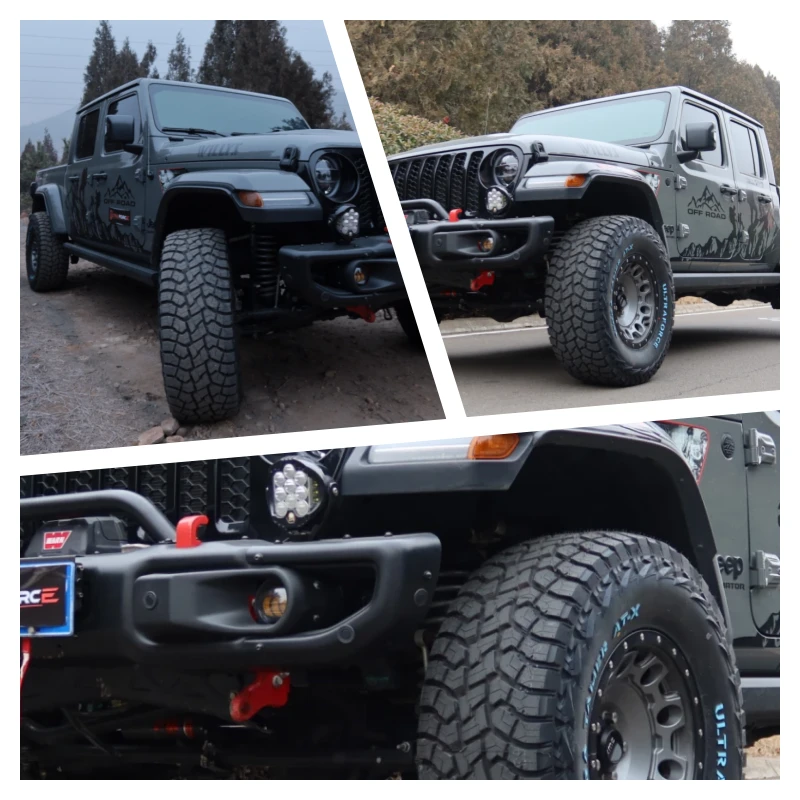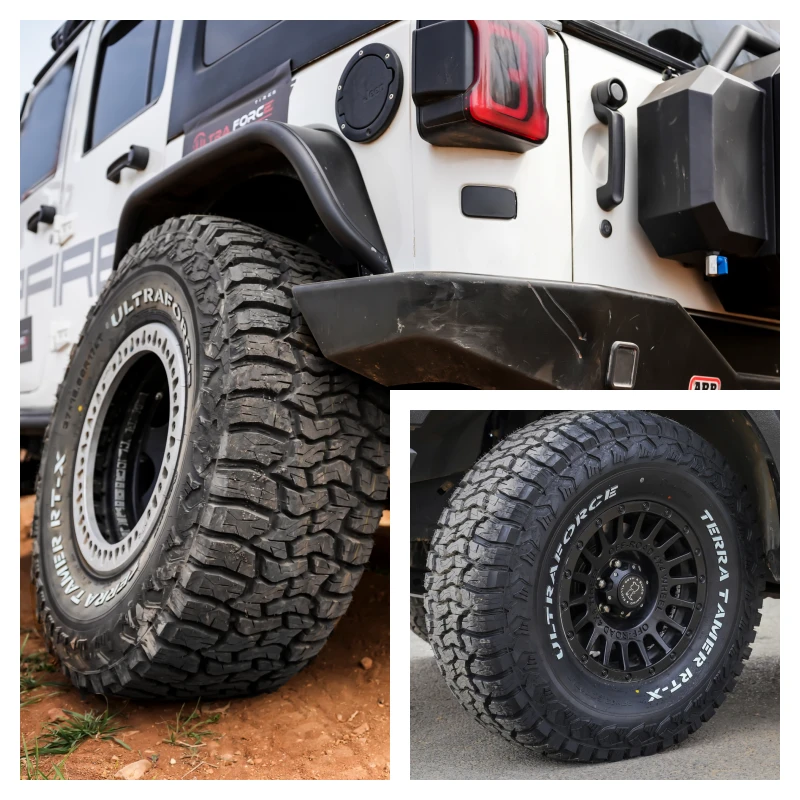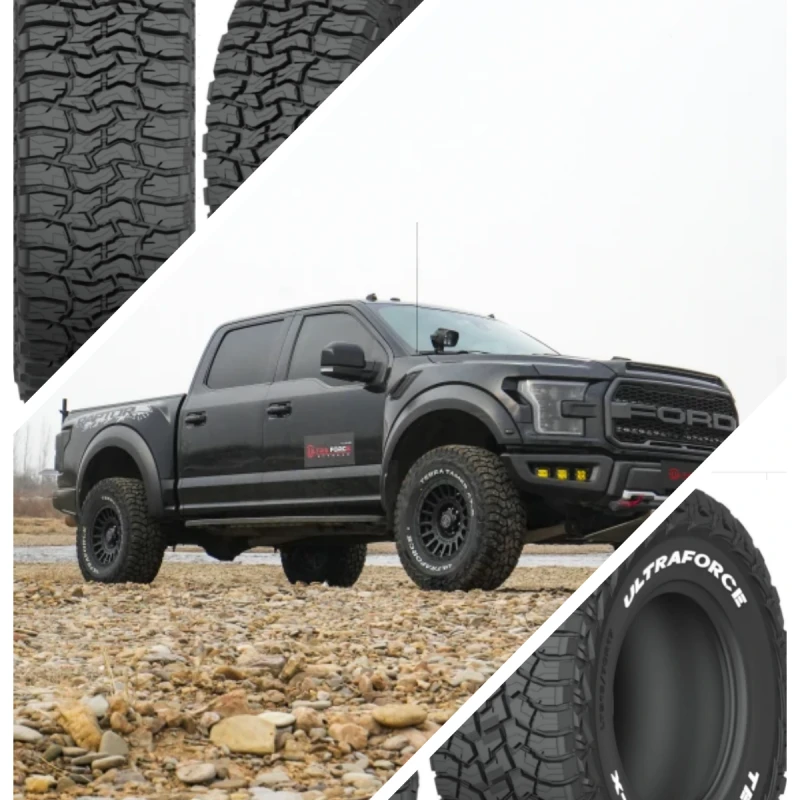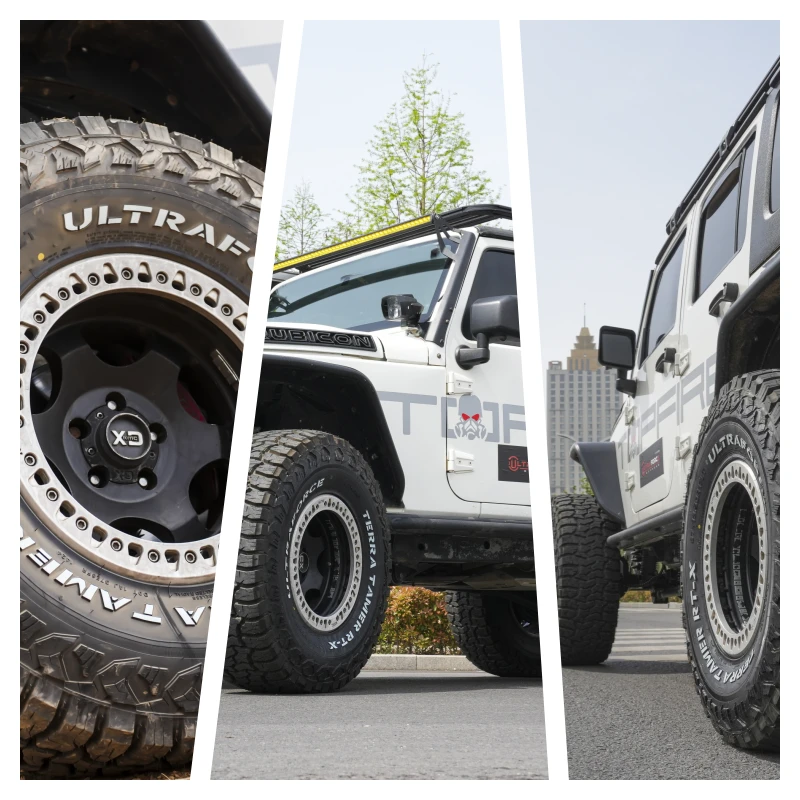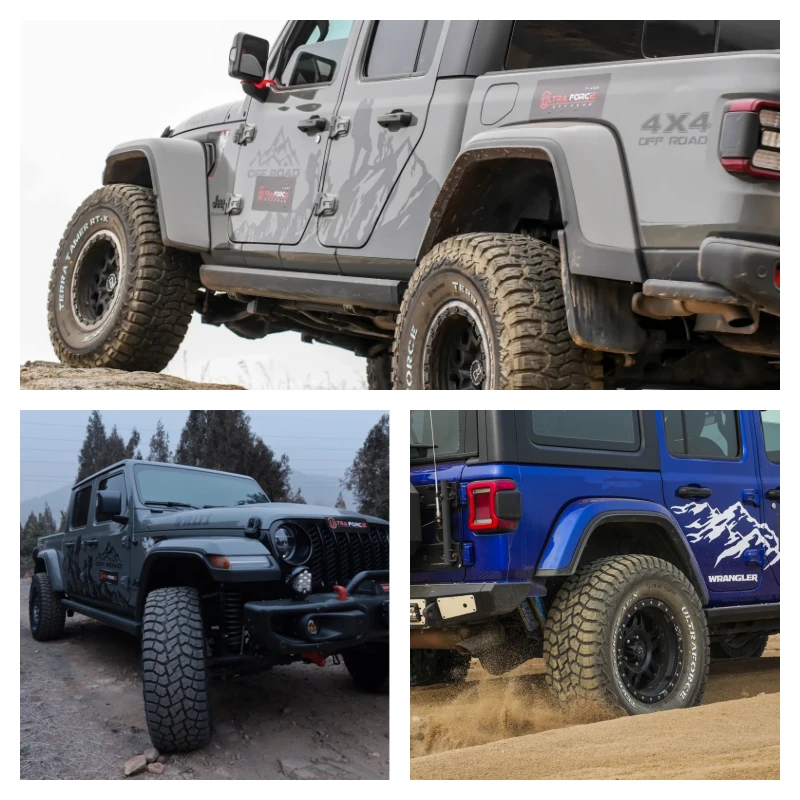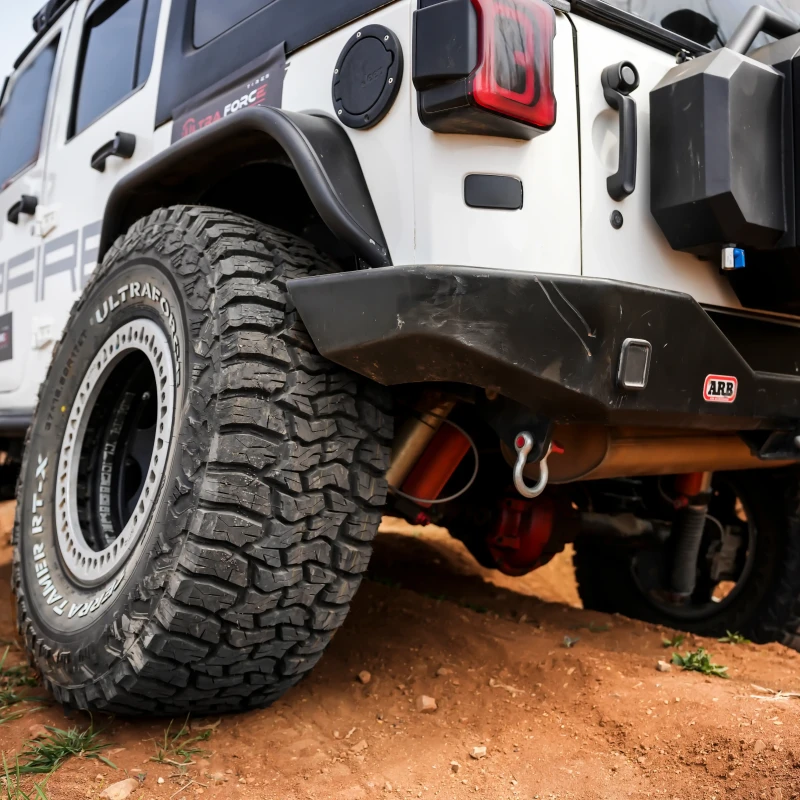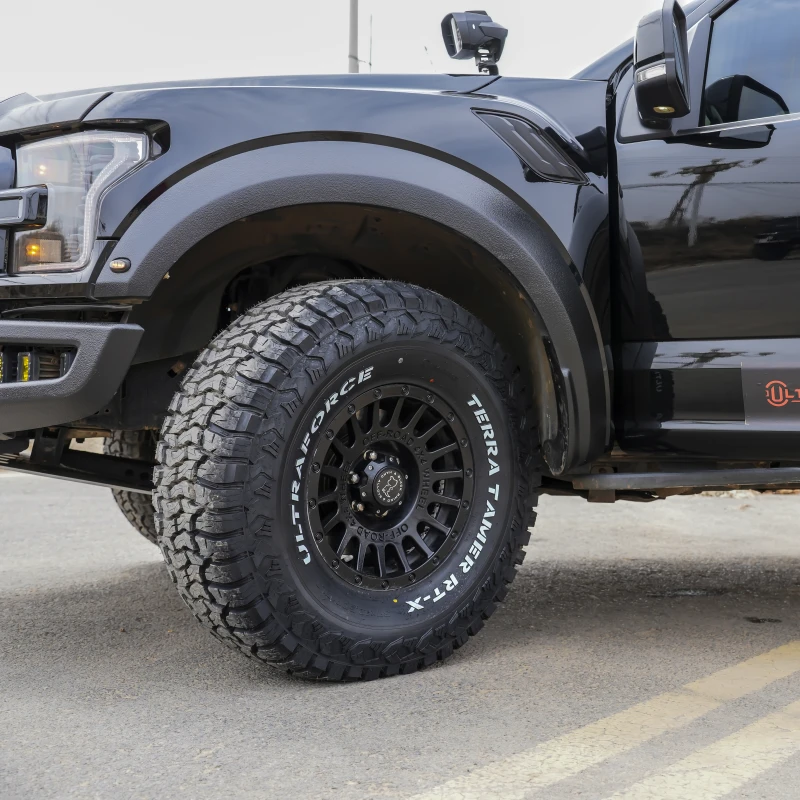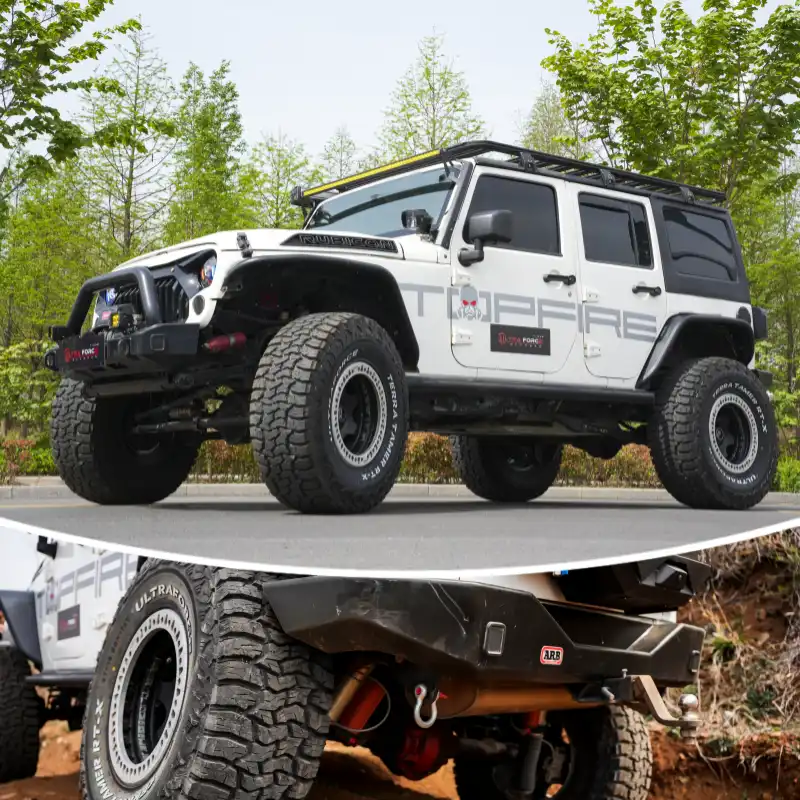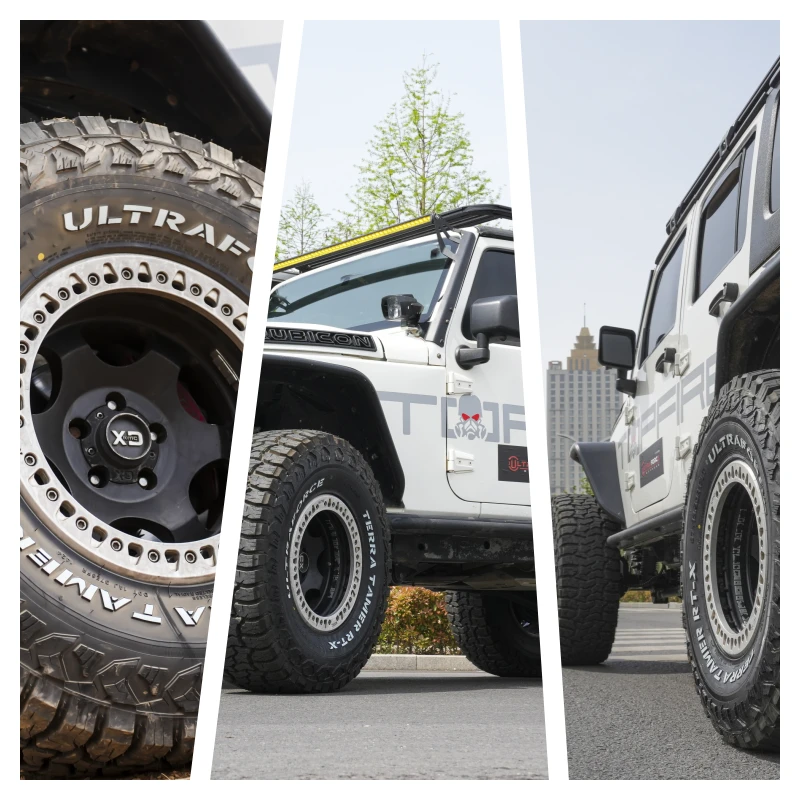What Are All-Terrain Tires Good For?
All-terrain tires have become a staple for drivers who seek a balance between off-road capability and on-road comfort. Their unique design caters to a variety of driving conditions, making them an excellent choice for adventurers and everyday drivers alike. This comprehensive guide will delve into the myriad benefits of all-terrain tires, their performance characteristics, and tips for selecting the right tire for your needs.
Understanding All-Terrain Tires
All-terrain tires are engineered to perform well across various surfaces, combining features of both mud-terrain and highway tires. With a tread pattern that typically includes larger, more aggressive lugs spaced farther apart than standard tires, all-terrain tires excel in gripping uneven and loose surfaces while still offering a smooth ride on highways.
Off-Road Performance
Enhanced Traction on Various Terrains: All-terrain tires are designed to excel in diverse off-road conditions. Their aggressive tread patterns help navigate through mud, sand, gravel, and rocky paths. For example, models like the Goodyear Wrangler All-Terrain Adventure and the BFGoodrich All-Terrain T/A KO2 are popular for their performance in challenging environments.
Self-Cleaning Capabilities: The spacing of the tread blocks allows mud and debris to be expelled as the tires rotate. This self-cleaning feature ensures that the tires maintain traction even in muddy conditions, providing confidence to drivers who frequently venture off-road.
Flexibility in Tire Pressure: One of the key advantages of all-terrain tires is their adaptability to different tire pressures. Lowering the tire pressure can increase the contact patch, enhancing grip in loose conditions. This technique is especially beneficial in sandy terrains where larger surface contact can prevent sinking.
| Tire Model | Sand | Mud | Gravel | Rocky | Snow |
|---|---|---|---|---|---|
| BFGoodrich All-Terrain T/A KO2 | 4/5 | 5/5 | 4/5 | 4/5 | 3/5 |
| Goodyear Wrangler Duratrac | 4/5 | 5/5 | 5/5 | 4/5 | 4/5 |
| Nitto Terra Grappler G2 | 4/5 | 4/5 | 4/5 | 4/5 | 3/5 |
| Michelin LTX A/T2 | 3/5 | 3/5 | 4/5 | 3/5 | 4/5 |
| Toyo Open Country A/T III | 4/5 | 4/5 | 5/5 | 4/5 | 4/5 |
All-Terrain Tires Perform in Different Weather Conditions
All-terrain tires are designed to provide reliable performance across various weather conditions, making them a versatile choice for drivers who encounter diverse environments. Understanding how these tires perform in different weather scenarios can help you make informed decisions for your driving needs.
Rain and Wet Conditions: All-terrain tires typically feature deeper treads with wider voids to channel water away from the tire’s contact patch, reducing the risk of hydroplaning. For instance, the Goodyear Wrangler Duratrac includes large, aggressive lugs that enhance grip in wet conditions. A study from Tire Rack found that vehicles fitted with all-terrain tires showed a 15% improvement in wet traction compared to standard highway tires. However, while they perform well in light to moderate rain, it’s essential to choose a model that is specifically rated for wet conditions to ensure safety.
Snow and Ice: Many all-terrain tires come with all-season capabilities, allowing for decent performance in light snow. For example, the Michelin LTX A/T2 is praised for its ability to handle snowy conditions, thanks to its tread design and rubber compounds that provide good traction. However, it’s important to note that while all-terrain tires can handle some snow, they are not a substitute for dedicated winter tires in severe conditions. According to the Rubber Manufacturers Association, vehicles equipped with winter tires can perform up to 50% better in snowy conditions compared to all-terrain tires.
Mud and Off-Road: The strength of all-terrain tires shines when it comes to mud and off-road driving. Tires like the BFGoodrich All-Terrain T/A KO2 have a tread design specifically engineered to dig into soft surfaces, providing excellent traction. A survey by the Off-Roading Association indicated that 80% of off-road enthusiasts prefer all-terrain tires for their ability to perform effectively in muddy conditions. The larger voids between the treads help to self-clean, preventing mud buildup that can hinder traction.
Heat and Dry Conditions: In hot and dry conditions, all-terrain tires can provide excellent performance, given their rugged construction. The Nitto Terra Grappler G2 is designed to withstand high temperatures, thanks to its advanced rubber compounds that resist heat buildup. This durability extends the tire's lifespan while maintaining performance. According to consumer feedback, drivers in arid regions often report satisfaction with their all-terrain tires during summer months, appreciating their stability and traction.
Seasonal Versatility: One of the main advantages of all-terrain tires is their ability to perform well across seasons without needing frequent changes. They are suitable for drivers who experience varying weather conditions throughout the year. A report from the Tire Industry Association notes that all-terrain tires offer an average of 30% more versatility compared to standard tires, making them a practical choice for many drivers.
In summary, all-terrain tires are designed to handle a variety of weather conditions, including rain, snow, mud, and dry heat. While they excel in many areas, it’s essential to choose the right model based on your specific driving environment and needs. For severe winter conditions, dedicated winter tires remain the safest option, but for those seeking all-around performance, all-terrain tires are a reliable choice.
Daily Driving Advantages
Comfort and Handling: All-terrain tires are designed with comfort in mind. Their tread patterns not only enhance off-road traction but also provide a smooth and quiet ride on highways. Many drivers appreciate this dual capability, especially those who use their vehicles for both work and leisure.
All-Season Capability: Many all-terrain tires are rated for all-season use, which means they can handle various weather conditions, including light snow and rain. This versatility makes them a practical option for drivers in regions with fluctuating climates. Tires like the Michelin LTX A/T2 are known for their ability to tackle diverse weather conditions effectively.
Longevity and Wear Resistance: Quality all-terrain tires are engineered to resist wear and tear, allowing them to last longer than standard tires. This durability makes them an excellent investment for those who drive frequently in varied conditions.
Specific Vehicle Types and Their Needs
SUVs and Trucks: All-terrain tires are particularly favored among SUVs and trucks, which require a robust tire that can withstand off-road conditions while providing comfort for daily driving. Vehicles like the Toyota Tacoma and Jeep Grand Cherokee are frequently equipped with all-terrain tires to enhance their off-road capabilities.
Crossovers: Crossovers often blend the features of cars and SUVs, making all-terrain tires a perfect fit. They provide the necessary traction for outdoor adventures while maintaining a comfortable ride for urban commuting. Models such as the Subaru Outback benefit significantly from the versatility of all-terrain tires.
Electric Vehicles (EVs): With the rise of electric vehicles, all-terrain tires have also found their place in the EV market. Their low rolling resistance can contribute to improved efficiency, while their ruggedness is perfect for adventurous electric SUVs like the Rivian R1T.
Choosing the Right All-Terrain Tire
Selecting the right all-terrain tire can be a daunting task given the plethora of options available. However, several key factors can help guide your decision:
Vehicle Type: The type of vehicle you drive plays a crucial role in tire selection. For instance, trucks and SUVs like the Toyota Tacoma or Jeep Wrangler benefit from all-terrain tires that enhance off-road capabilities. Look for tires with higher load ratings that can support the weight and towing capacity of your vehicle.
Driving Conditions: Consider where and how you’ll be driving most frequently. If you plan to tackle mostly rocky terrains and muddy paths, opt for tires with aggressive tread patterns, like the Nitto Terra Grappler G2. For those who will primarily use their vehicle for highway driving with occasional off-roading, a tire like the Michelin LTX A/T2 offers a balance of comfort and off-road performance.
Tread Design: The tread design of all-terrain tires significantly influences performance. Tires with larger voids and lugs are ideal for off-road conditions, while those with tighter tread patterns are better suited for on-road use. For example, the Toyo Open Country A/T III provides an aggressive tread for off-road adventures while maintaining stability on highways.
Weather Considerations: Evaluate the climate in your region. All-terrain tires with all-season capabilities are essential if you experience varied weather conditions, including rain and snow. The Goodyear Wrangler Duratrac is a prime example of a tire designed to perform well in both wet and dry conditions.
Customization Options: Many manufacturers, including UltraForce Tires, offer customization options for tread patterns, sizes, and branding. If you have specific needs or driving conditions, consider reaching out to tire manufacturers to explore available options that meet your requirements.
Price and Warranty: Finally, consider your budget and any warranties offered. While high-quality all-terrain tires may be more expensive upfront, their durability and performance often make them a worthwhile investment. Look for tires that come with a warranty, as this can provide additional peace of mind.
In conclusion, choosing the right all-terrain tire involves evaluating your vehicle type, driving conditions, tread design, weather considerations, customization options, and budget. By carefully assessing these factors, you can ensure you select a tire that meets your specific needs and enhances your driving experience.
| Tire Model | Best For | Key Features | Price Range |
|---|---|---|---|
| BFGoodrich All-Terrain T/A KO2 | Off-road enthusiasts | Excellent traction, durable sidewalls | $150 - $300 |
| Goodyear Wrangler Duratrac | Mixed driving conditions | Mud and snow traction, rugged design | $170 - $350 |
| Nitto Terra Grappler G2 | Versatile use | Balanced performance, quiet ride | $160 - $320 |
| Michelin LTX A/T2 | Light trucks/SUVs | Comfortable on-road, decent off-road | $180 - $360 |
| Toyo Open Country A/T III | Heavy-duty use | Aggressive tread, good stability | $170 - $340 |
Maintenance Tips for All-Terrain Tires
Proper maintenance of all-terrain tires is crucial for ensuring their longevity and performance. Here are several essential maintenance practices to keep your tires in optimal condition:
Regular Tire Pressure Checks: Maintaining the correct tire pressure is vital for performance and safety. Under-inflated tires can lead to poor handling, reduced fuel efficiency, and increased wear. A study by the National Highway Traffic Safety Administration shows that properly inflated tires can improve fuel efficiency by up to 3%. Use a reliable tire gauge to check the pressure monthly, especially before long trips or off-road excursions.
Tire Rotation: Regularly rotating your tires is important for even wear. Typically, tires should be rotated every 5,000 to 8,000 miles. This practice is particularly crucial for all-terrain tires, as uneven wear can affect performance and handling. Many manufacturers recommend a specific rotation pattern; consult your vehicle’s manual or a tire professional for guidance.
Visual Inspections: Conduct monthly visual inspections of your tires for signs of damage, such as cuts, punctures, or abnormal wear patterns. Catching issues early can prevent further damage and costly repairs. Look for uneven wear, which may indicate alignment or suspension problems that need addressing.
Alignment and Balancing: Ensuring your tires are properly aligned and balanced is essential for handling and tire longevity. Misalignment can lead to uneven wear and affect your vehicle's handling. Have your alignment checked annually or if you notice your vehicle pulling to one side. Balancing helps distribute weight evenly across the tires, improving ride quality and extending tire life.
Tread Depth Monitoring: Checking the tread depth is critical for maintaining traction, especially for off-road conditions. Use the penny test: insert a penny into the tread; if you can see the top of Lincoln's head, it's time for a replacement. Many experts recommend replacing tires when tread depth falls below 4/32 of an inch for all-terrain tires, particularly if you frequently drive in wet or slippery conditions.
Proper Storage: If you switch between seasonal tires, store them properly. Keep them in a cool, dry place away from direct sunlight, which can degrade rubber. Store them upright to prevent deformation.
In summary, effective maintenance practices, including regular pressure checks, tire rotation, visual inspections, alignment, tread depth monitoring, and proper storage, are crucial for extending the life of all-terrain tires. By implementing these practices, you can ensure your tires perform optimally, enhancing your overall driving experience and safety.
| Maintenance Task | Frequency | Importance |
|---|---|---|
| Tire Pressure Check | Monthly | Prevents uneven wear and enhances safety |
| Tire Rotation | Every 5,000 - 8,000 miles | Ensures even wear across all tires |
| Alignment Check | Annually | Improves handling and reduces wear |
| Visual Inspection | Monthly | Detects damage or wear early |
| Tread Depth Check | Monthly | Ensures adequate traction |
Real-World Applications of All-Terrain Tires
Overlanding: All-terrain tires are a favorite among overlanders, who travel long distances across varied terrains. These tires provide the reliability and performance needed for adventures that may include off-road driving, camping, and navigating rugged landscapes.
Work Vehicles: For professionals in construction or agriculture, all-terrain tires can be a practical choice. They offer the durability required for rough job sites while remaining suitable for driving on public roads.
Leisure Activities: All-terrain tires are perfect for recreational vehicles, including ATVs and side-by-sides. Their ability to navigate through challenging terrains enhances the overall experience of outdoor adventures.
Popular All-Terrain Tire Models
Several all-terrain tire models stand out in the market for their performance, durability, and versatility:
BFGoodrich All-Terrain T/A KO2: Known for its ruggedness and excellent off-road traction, this tire is a favorite among off-road enthusiasts. Its sidewalls are designed for improved durability against cuts and bruises.
Goodyear Wrangler Duratrac: This tire combines rugged performance with on-road comfort. It features aggressive tread patterns that provide excellent traction in mud and snow.
Toyo Open Country A/T III: This model is recognized for its balanced performance on and off the road, providing a smooth ride while excelling in off-road conditions.
The Environmental Impact of All-Terrain Tires
As the automotive industry moves towards sustainability, it's essential to consider the environmental impact of tires. Many manufacturers are developing eco-friendly all-terrain tires that utilize sustainable materials and production methods. These innovations aim to reduce the carbon footprint associated with tire production while maintaining performance.
| Tire Brand | Sustainable Materials Used | Eco-Friendly Manufacturing Practices | Carbon Footprint Reduction Strategies |
|---|---|---|---|
| BFGoodrich | Recycled rubber | Energy-efficient production methods | Recycling programs |
| Goodyear | Biodegradable components | Waste reduction initiatives | Carbon offset programs |
| Michelin | Renewable materials | Sustainable sourcing | Eco-design principles |
| Toyo | Recycled materials | Resource-efficient processes | Life-cycle assessment |
| UltraForce Tires | Customizable for sustainability | Tailored production processes | Focus on reducing waste |
Conclusion
All-terrain tires are an invaluable investment for drivers who require versatility and reliability. Their ability to perform well across various terrains makes them suitable for off-roading adventures, daily commutes, and everything in between. By understanding the benefits and selecting the right model for your specific needs, you can enhance your driving experience and tackle any terrain with confidence. Whether you’re exploring the great outdoors or navigating city streets, all-terrain tires are designed to meet the demands of modern drivers.
Elevate Your Driving Experience with UltraForce Tires
At UltraForce Tires, we pride ourselves on being a leading designer and manufacturer of high-quality off-road and passenger tires. With decades of experience in product development and global export, we are committed to providing every consumer and enthusiast with tires that excel in performance, durability, and superior traction.
Our mission is to deliver an outstanding driving experience for you, our valued customer. We understand that your driving needs vary—from navigating daily traffic to conquering rugged off-road trails. That’s why we create tires that perform exceptionally in various road conditions, ensuring you have the ultimate companions for your adventures.
Our diverse range of off-road tires is specifically designed to meet the demands of all terrains and weather conditions, from sandy deserts and rocky trails to muddy paths and snowy roads. Additionally, we offer customized services, including tread and sidewall design, size specifications, branding, and performance adjustments tailored to your driving conditions.
Choose UltraForce Tires and experience the perfect blend of innovation and quality. Whether you're an everyday driver or an off-road enthusiast, we have the right tire to elevate your driving experience. Discover more about our products and how we can support your journey by visiting our website or contacting us today!
